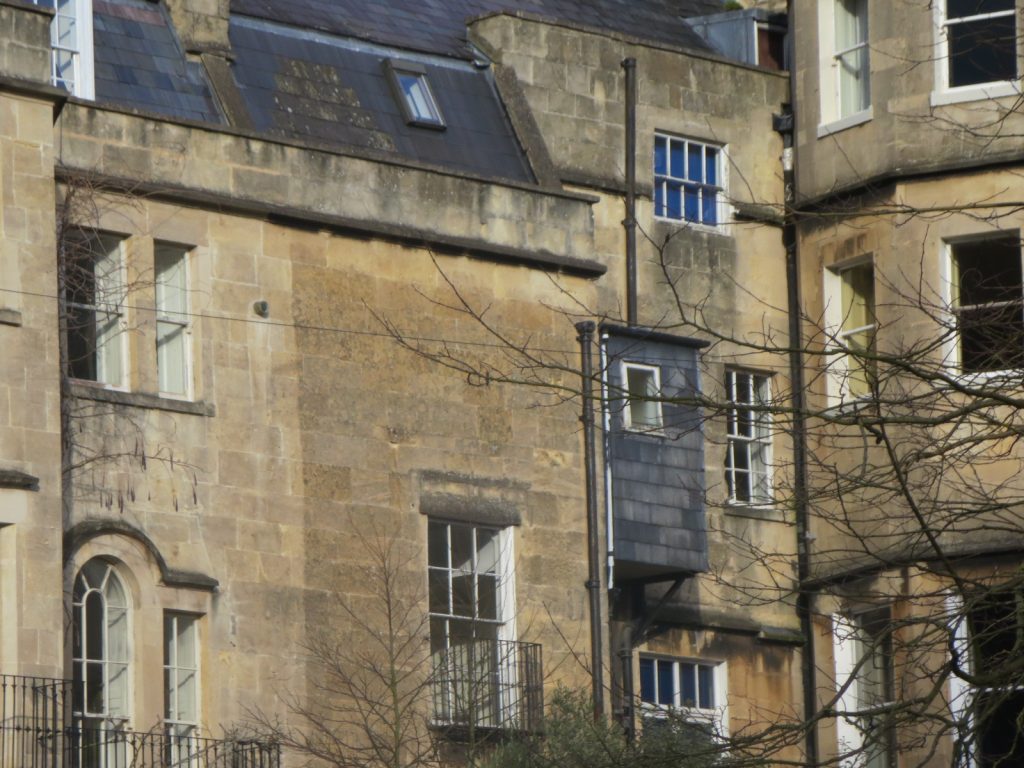I woke up this morning in Bath. My one and only full day in the city.
I had planned to go on a day trip to see the Cotswolds which is a collection of small villages just north of here.
It’s a very popular day trip and I had booked mine about a few weeks prior.
Then, out of the blue, just a day before I was to depart for Bath I received an email saying the tour for today had been cancelled.
Huh… well that sucks!
My only reason for coming to Bath in the first place was to just go on this day trip.
I had to quickly scramble to figure out what to do today.
And, naturally, I went on a free walking tour cause free walking tours rock!
The tour in Bath is unlike other free walking tours in that it was indeed free.
Normally when you take a free tour it’s implied that you tip (usually $5) at the end. The tour here in Bath is actually organized by the city and the guides are part of The Mayor of Bath’s Corps of Honorary Guides.
They wear a special badge and they outright say they do not accept tips or gratuities. It’s even printed on the sign at the meeting point.

The guides are mostly retirees with spare time on their hands. My guide Collin said he does the tour usually once a week and has been doing so about 7 years.
So, anyway, on to the tour.
The tour runs at both 10:30 and 2:00 and while I was up in plenty of time to get to the earlier one, I decided I just wanted to veg out til noonish and then head into town.
Hey, I’m on vacation, right? A little vegging is a good thing!
Around 30 of us showed up for the tour which is a pretty good number considering Bath is a small town and they did one earlier in the day.
They split us into two groups and we were off to explore the city.
Here’s some cool things I learned along the way…
Damn seagulls!

If you’re walking around downtown Bath you’ll quickly become aware that the city has a bit of a seagull problem.
There are alot of them and they dive bomb from time to time. So many, in fact, that they actually have signage on their garbage bins to “not feed the gulls”.
Apparently the problem swelled when the city went green about 10 years ago.
Gone was the one covered bin and in it’s place were separate recycling bins with their plastic bags easily picked at by seagulls.
One seagull told another, then another and before you knew it, they were all over town.
The legend of King Bladud
Around the city you’ll see multiple displays of acorns and of pigs. Little carvings here, store names there.
But why?
Well, it all ties into the legend of King Bladud…
As a prince he traveled quite a bit. On one of his travels he contracted a skin disease like leprosy and was soon banished from his tribe.
He found work as a swineherd in Avon Valley working on a farm with pigs who soon also contracted the disease.
As food was scarce, a farmer told him to look for acorns across the river.
The pigs followed and began to wallow in the hot mud and to entice them out Bladud climbed a tree, collected some acorns and made a trail for the pigs to follow out of the water.
As the pigs came out and he scraped the mud from their skin Bladud noticed that the water had cleansed and cured them.
Naturally, he lept into the hot mud bath himself and, sure enough, his leprosy was cured as well.
Being cured, the prince returned to his tribe and when he became King he established a settlement here in Bath where a city grew around the temple he built by the hot springs.
Caution money
Naturally, people came from near and far to reap the natural healing qualities of the springs of Bath.
Bath became known as a place for the infirm and unwell to stay and seek refuge.
They would travel with “caution money” which they would pay the hospital when they arrived.
People from England would come with £3 while those outside England would bring £4.
£2 was used to treat the patient for their long stay of usually 4 or 5 months and the remaining amount was used to pay for their trip home.
Of course if they just dropped dead here in Bath then the remaining amount was used for their burial instead.
A rich new world

Aside from the sick coming to Bath, the city was also attracting the wealthy.
It was a place to see and be seen.
In the 1700s a man named Richard Nash (nicknamed Beau) was the Master of Ceremonies for the city which gave him extensive influence in the city.
He would meet new arrivals to Bath and basically organize the fun and frivolity going on in the city.
He was also notable for breaking down the rigid barriers which had previously divided the classes and for encouraging a new informality in manners.
Urban development

Speculative building was introduced to Bath by an architect named John Wood.
When the average yearly salary was just £20, he signed a 99 year lease for the land at Queen Square for £137 per year.
He soon designed and built building after building in the classical Palladian architecture style.
The remaining lots were divided into individual building plots that he sublet to masons who would build and then rent to landlords who in turn would rent to renters.
In it all, speculative building was very good to John Wood as he turned a profit of £168 a year which is about £300,000 ($500,000) in today’s currency.
Not only that, though, his Palladian style of architecture and urban development lured the rich and elite to Bath.
Hanging loos

Back in the day if you had to go you had to use an outhouse, a bucket or a chamberpot.
So, when the marvel of household plumbing came into existence people who could afford it added semi external loos to their buildings.
What’s a semi external loo? Well, it’s basically a small addon to the building’s structure housing a toilet.
People literally built a box shaped room hanging off the back of their building hence the “hanging loo” terminology.
Problem was, they didn’t give any thought to structural support and inevitably what would happen would be the loo falling off the building and splatting on the ground below (usually when occupied).
A sh*tty way to start the day but a lot of entertainment for those who witnessed it.
The window tax

The amount of taxes people would pay used to be calculated by how many windows you had in your home.
You see, back then, windows were a luxury so the more of them you had the richer you were.
Naturally, as with every other tax, there was a loophole.
A provision was introduced that if a window was less than 12 inches apart from another window then they were only counted as one window.
Of course people soon started to renovate their homes taking out windows and replacing them closer together or just outright bricking them up.
Even today you can still see the outline in the walls of where windows used to be before they were moved over.
Anyway, like always, a handful of really cool stories about the history of the city and of life in general back in the 1700s.
Tomorrow it’s another walking tour – this time with a real life Robin Hood in the town of Nottingham.
Time to be with merry men…

